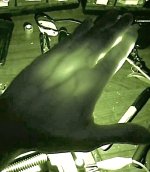Newbie here but looking to learn.
I see there are many frequencies available but is it possible to have one laser and many frequencies through adapters?
How can you multiply or divide the frequency and create many nm variations from a single light source ?
I’ve got to do some research into a wide spectrum of lasers and with no experience in this field I’m not sure if I have to buy one of everything or is there a variable system that would either cover all frequencies or hit major steps ?
Thank you.
I see there are many frequencies available but is it possible to have one laser and many frequencies through adapters?
How can you multiply or divide the frequency and create many nm variations from a single light source ?
I’ve got to do some research into a wide spectrum of lasers and with no experience in this field I’m not sure if I have to buy one of everything or is there a variable system that would either cover all frequencies or hit major steps ?
Thank you.




